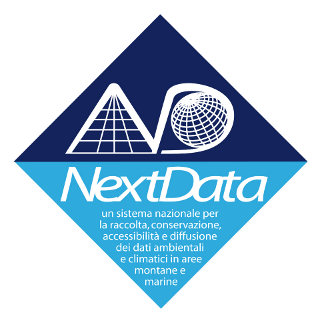You are here
THREDDS Server
Data access is granted through a browsable THREDDS server hosted by CINECA in the framework of the DATA SPHINX EUDAT Data Pilot project.
Files can be downloaded directly from the web catalog, or alternatively they can be easily retrieved using wget scripts.
A sample script can be:
wget --user=USERNAME --password=PASSWORD https://sphinx.hpc.ext.cineca.it/thredds/fileServer/SPHINX/${exp}/post/Post_${year}/ifs/${frequency}/${exp}_${frequency}_${year}_${var}.nc
for a sample field will be (snow depth from year 1980 of experiments lab0 at monthly frequency)
wget --user=USERNAME --password=PASSWORD https://sphinx.hpc.ext.cineca.it/thredds/fileServer/SPHINX/lab0/post/Post_1980/ifs/mon/lab0_mon_1980_snd.nc
You will need USERNAME and PASSWORD provided by us to access these data.
Spatial and temporal subsetting options are available through a NetCDF Subset Service. For instance, a subdomain can be extracted (lon1-lon2-lat1-lat2 identifies the subdomain borders):
wget --user=USERNAME --password=PASSWORD "https://sphinx.hpc.ext.cineca.it/thredds/ncss/SPHINX/
DIRECTORY TREE
EXPERIMENTS NAME DESCRIPTION
All experiments have 4 letters:
- First letter is the resolution
C=coarse=T159L91; L=low=T255L91; M=medium=T511L91; H=high=T799L91; U=ultra=T1279L91
- Second letter is the type of experiment:
A=atmospheric-only present day; F=atmospheric-only future scenario; C=coupled scenario
- Third letter is the stochastic physics
B=baseline, no stochastic physics; S=stochastic physics active
- Fourth is the ensemble member number
Numbers range from 0 to 9 for coarse and low resolution, 0-5 for medium resolution, 2-4 for high resolution. Ultra resolution experiments names is uab3/ufb3 (deterministic) and uas2/ufs2 (stochastic). For coupled experiments the run identifier are 0-2.
NEW: There is a special ensemble memeber "m" which represents the ensemble mean of all ensemble members.
Re. the resolution, the Txxx implies the linear triangular truncation level. For example, the T1279L91 resolution, means that we have a linear truncation at wavenumber 1279 in spectral space and 91 vertical levels. In grid point space this correspond to about 0.14 degrees (2560x1280 grid points).
YEARS
Atmospheric-only present day (Historical CMIP5 scenario) ranges from 1979 up to 2008
Atmospheric-only future scenario (RCP8.5 CMIP5 scenario) ranges from 2039 up to 2068
Coupled scenario ranges from 1850 up to 2100 (Historical up to 2005, then RCP 8.5).
FREQUENCY
Time frequencies avaialable are mon, day, smon, 6hrs, 3hrs_cdx, 3hrs_itp.
VAR
Variable names are CMIP-like. A complete list can be found here
FREQUENTLY ASKED QUESTIONS (FAQs)
1. Where can I find the boundary conditions (i.e orography, land-sea masks, etc.) of the experiments?
Boundary conditions are stored only for the present-day AMIP experiments. Each experiments has a "bc" folder in the post-processing of the first year of the experiments (1979) that contains the boundary conditions. Orography, land sea mask, type of vegetation and high and low vegetation percentage cover have been saved. These are stored in both grib format on the original gaussian reduced grid or in netcdf format on the regular gaussian grid. Boundary conditions for future and coupled experiments are the same as the correspondent present-day simulation. For example, orography for a T511 future simulations (i.e. mf??) can be downloaded browsing for year 1979 of mab0 experiments.
wget --user=USERNAME --password=PASSWORD https://sphinx.hpc.ext.cineca.it/thredds/fileServer/SPHINX/mab0/post/Post_1979/ifs/bc/mab0_bc_Z.nc
2. I did not see the the SST data for atmosphere-only simulations. Where can I find it?
We decided to not store the SST field. Instead, we use tsl1, the first layer of the soil temperature. In IFS, the soil temperature over is saved over both the land (a real soil temperature) an over the sea, where represents the SSTs. Therefore, SST can be obtained thus downloading the tsl1 field, which is available at daily and monthly frequency.
3. Is it possible to browse the SPHINX data on the THREDDS server?
Yes, a browsable version is avaiable at -> http://sphinx.hpc.ext.cineca.it/thredds/catalog/SPHINX/catalog.html








